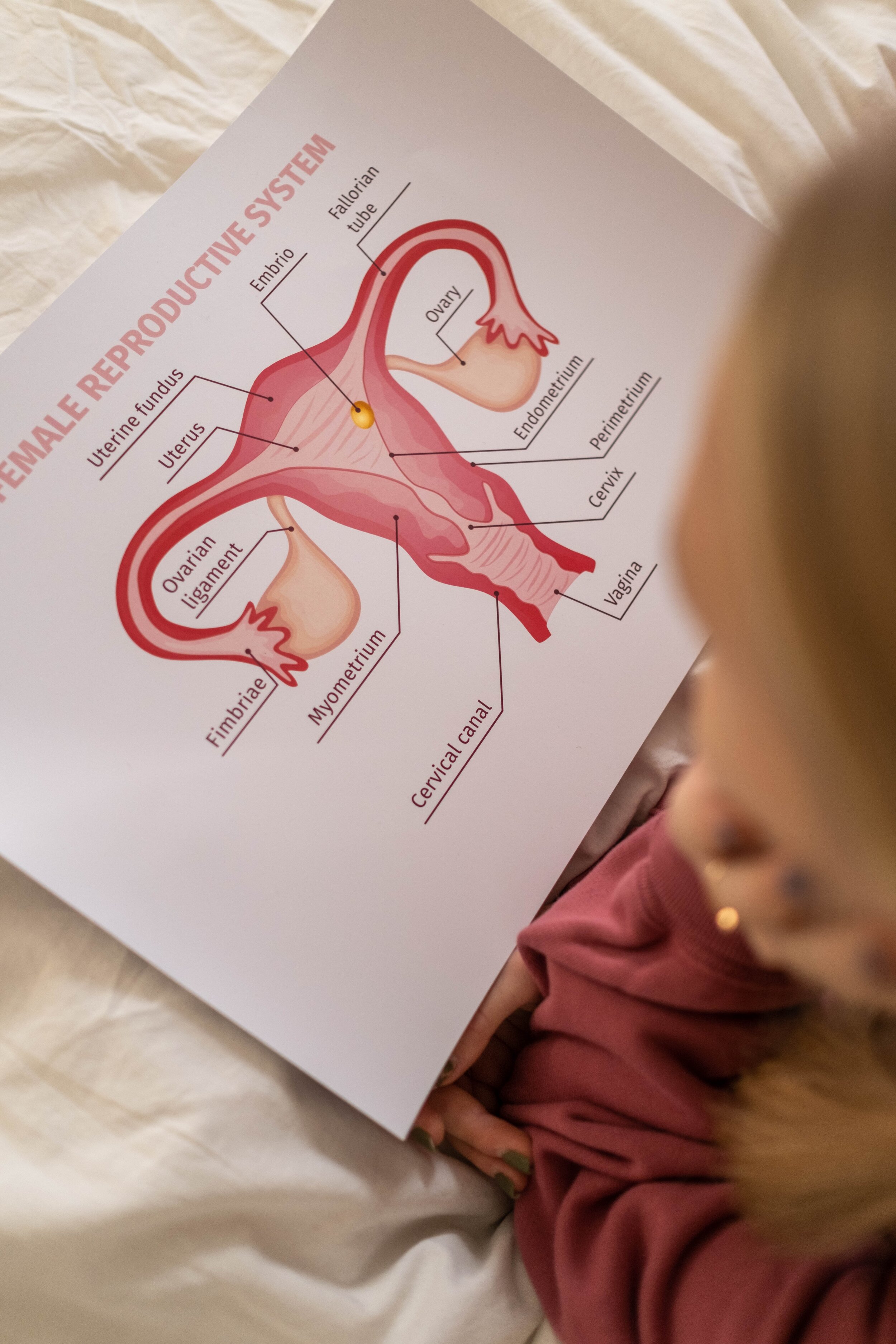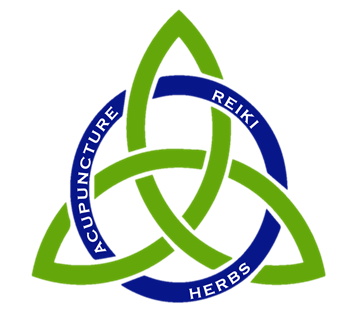We have all heard of Uterine Fibroids and how they can be invasive to our wombs and lives. Most often, uterine fibroids can happen at any point during our reproductive age from menarche (1st bleed) till menopause. It is very common for increase growth of fibroids during the ages of 30 to 40-years old. 1 out of 10 women have the uterine fibroids without the obvious symptoms of pain and heavy bleeding. Did you know it is quite common for our follicles to develop into cysts on the ovaries until they are matured and released as an oocyte for ovulation? If there is an imbalance in our monthly hormonal transitions; then, these cysts may develop into fibroids seen in P.C.O.S. (Polycystic Ovarian Syndrome).
The cause of uterine fibroids are still unknown but there are a few things that can contribute to their growth. There is an a genetic component to uterine fibroids. I am sure some of you have heard of the stories from your mom, grandmother, and aunts, in how they had painful periods, heavy bleeding, felt 5 months pregnant, and most often decided to try birth control, or given a hysterectomy as remedies. Genetics may pass on the genes that pave way for the uterine fibroid growth BUT we need epigenetics to turn them on. The epigenetics are environmental factors that build up overtime to turn on certain genes. Of course, an imbalance in hormone transitions contribute to the growth of uterine fibroids such as progesterone, estrogen, and growth factor. The uterine fibroid has more receptors than healthy muscles do for estrogen and progesterone; so their growth can be influenced by these hormones throughout the month.
We do know uterine fibroid growth starts in the brain because the center of the brain (the pituitary gland and hypothalamus) will release FSH, follicle stimulating hormone, which will communicate to the ovary to release estrogen. The estrogen may be received from the fibroid cells and increase growth.
What Factors Contribute the development Uterine Fibroids? There is a common thread of uterine fibroid growth from ages 30-40-years old, African-American women, or starting a period before the age of 10. Certain lifestyle choices such as a nutrition filled with meat and trans fats because these can increase adipose tissue (fat). The more fat we have, the more likely androgens change into estrogen.
If one has a vitamin D deficiency; then, they can increase their changes of fibroid growth. This can be checked by blood work for testing vitamin D3. One interesting fact that protects one from uterine fibroids is smoking because smoking blocks estrogen. This is unfortunate because of the harm smoking can do and I do not recommend starting to smoke to prevent fibroids.

How would I know I have Uterine Fibroids? The most common symptoms of Uterine fibroids include heavy menstrual bleeding longer than 1 week (7 days), constipation, enlarged lower stomach/ bloating, and depression. Some other symptoms may happen are pelvic pressure and pain because of the fibroid is weighing down on the pelvic floor. This can cause frequent urination and difficulty emptying the bladder because the bladder, uterus, and colon are all aligned and in the level. Back pain, leg pain, with a dull ache and a sense of heaviness because the fibroid is compressing this area and pulling on the broad and round ligaments; which hold the uterus and ovaries up.
Are Uterine fibroids serious? Complications from uterine fibroids include anemia because of the monthly, heavy and prolonged bleeding, risk of miscarriage with certain types of fibroids such as the submucosal fibroid because it will compete for circulation with the baby, placenta abruption where the placenta detaches from the uterine lining, premature labor, and others.
How are Fibroids diagnosed? There are a few steps to take to determine if one has an uterine fibroid. It is important to schedule an appointment with an Ob-gyn that you feel safe and comfortable with, so a pelvic exam can check out the shape of the uterus. Usually, the doctor is trying to feel if the uterus is hard, boggy, and/or lumpy. If the uterine shape is off; then, the doctor will order a Pelvic Ultrasound to map and measure any fibroids found. Some blood work such as a CBC differential will be ordered to rule out anemia and a female hormone panel can be used to determine hormonal levels. Sometimes if the size cannot be clear on the Pelvic Ultrasound, the doctor may recommend a MRI to get an accurate of size and location. There are 2 other procedures that can be used for uterine fibroids: Hysterosalpingography and Hysteroscopy. The Hysterosalpingography is used to show submucosal fibroids and to see if there are any fallopian blocks. This testing is important to determine fertility health. The hysteroscopy is used to see the uterus through the cervix.
How are Uterine Fibroids usually treated? Traditionally, if there are no symptoms from the fibroids; then, usually they recommend “watch and wait” because of the idea fibroids may self shrink. While this maybe true for small fibroids, this is bad advice because the periods are unpredictable and this poses risk for infertility for those trying to conceive. The other options are drugs, hormonal therapies, and surgeries. Usually, hormonal therapies include GnRH agonist to block estrogen production and progesterone; which basically puts a woman in a temporary menopause state. This helps stop the period, may shrink the fibroid, and improve the anemia because of no more heavy bleeding. The progestin therapy as an IUD helps provide symptom relief to stop heavy bleeding and prevent pregnancy. Oral contraception (certain birth control pills), help stop bleeding and reduce the fibroid size. But all of the hormonal options cannot support a woman when she is trying to conceive. The drug, surgery, and hormone therapy options we will not discuss because these are out-of -the-scope of an Acupuncturist, so it is important to talk to your Ob-gyn about these options.
Can Acupuncture & Herbal Therapy Help with Uterine Fibroids? Acupuncture, Herbal Medicine, and Nutrition can help reduce uterine fibroids, improve fertility options, and manage any regrowths of fibroids. Usually, if the fibroid is 6.5 cm, or smaller, Herbal therapy can help reduce the fibroid; while the Acupuncture can help regulate the hormone levels such as estrogen.
In TCM (Traditional Chinese Medicine), we are looking at the type of fibroid one has based on the location, type of pain, what makes the pain/fibroid symptoms worst, and other symptoms present. Once the TCM pattern is diagnosed; then, the treatment plan will include Acupuncture, herbal medicine for the type of fibroid and pattern, nutritional recommendations, and sometimes stress management techniques.
The Acupuncture points used for each person will vary and customized to their type of fibroid and pattern. This will help address the symptoms and root cause of why these fibroids are growing in the first place. The herbal medicine are customized to the person’s needs and can be adjusted overtime as symptoms improve. The herbal medicine will be used to either help reduce pain, improve blood circulation, help balance hormones, and target the fibroid to decrease in size. The goal is to change the environment that invited the fibroid to grow, so we can try to prevent them from reemerging after reducing the fibroids.
Nutrition to Decrease Fibroids: It is important to avoid trans fats and reduce red meats because these contribute to increase Omega 6’s, which increase inflammation, pain, and swellings such as fibroids. It is important to eat whole fruits, vegetables, and grains (sometimes) and decrease caffeine, alcohol, and processed foods. I know it is challenging to change our eating habits but it is important in the long run of uterine health and reducing fibroids.
Lifestyle Recommendations includes exercise and mediation. For exercising, focus on strength training 2-3 times per week to build lean muscle and decrease fat. Decreasing fat tissue helps decrease excess estrogen levels and lowers the growth rate of the fibroid. For cardio, move your body that is fun for you. Try short 20 minutes interval training and remember to fuel before and after the workout with whole foods. This helps control insulin and blood sugar levels.
Treating Uterine Fibroids with TCM Acupuncture and Herbal Medicine is NOT a quick fix. It is not a pill but a lifestyle adjustment with herbal therapy and Acupuncture. It takes at least 4 months to see changes in reducing fibroid growth because their growth is influenced by the monthly hormonal changes. It is usually recommended to have a Pelvic Ultrasound before seeking Acupuncture and herbal therapy because we can know how big, location, possible type of fiborid (need MRI), and how many we are working with. Normally, I will recommend getting another Pelvic Ultrasound after 4 months of treatment to check progress. While this treatment strategy takes time, it is safe, drug-free, and the least invasive option. Sometimes this is an option for those trying to conceive, had fibroid regrowths after surgery, or are not responsive to hormonal therapies.

